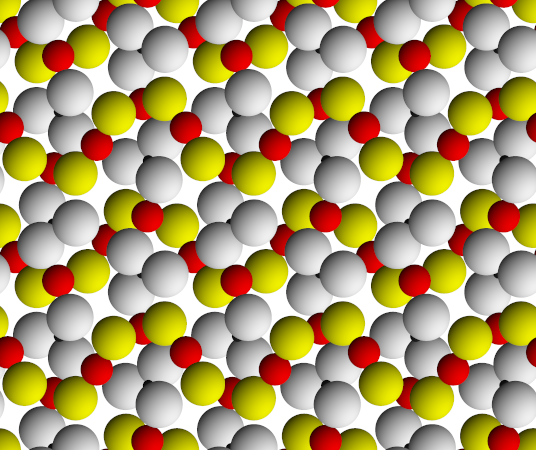3.2 Introduction to Minerals
“Minerals” Defined
We now know about the building blocks that make up minerals, but what exactly is a mineral, again? Remember that we defined a mineral as something solid, with defined chemical composition and patterned atomic structure that also happens to be naturally occurring. From the last section, you should have a good idea of what “defined chemical composition” means.
What is “patterned atomic structure”? If we were to look at a mineral waaaaay up close to its atomic structure, we would see that its atoms are arranged in a clear, repeating pattern. Check out this illustrated atomic structure of the mineral, malachite for example!

The final criterion for a mineral is that it must be naturally occurring. This means we cannot make diamonds in a lab and technically call them “minerals” by this strict definition, even if they meet all the other criteria. Lab-created stones are becoming more commonplace in this modern age, and this definition differentiates what is produced by the earth vs. what can be produced by mankind.
Keep in mind that most rocks ARE NOT minerals! This is because they often contain different minerals in their matrices AND you usually cannot pin down a specific chemical composition for a rock like sandstone, granite, gneiss, etc.!

